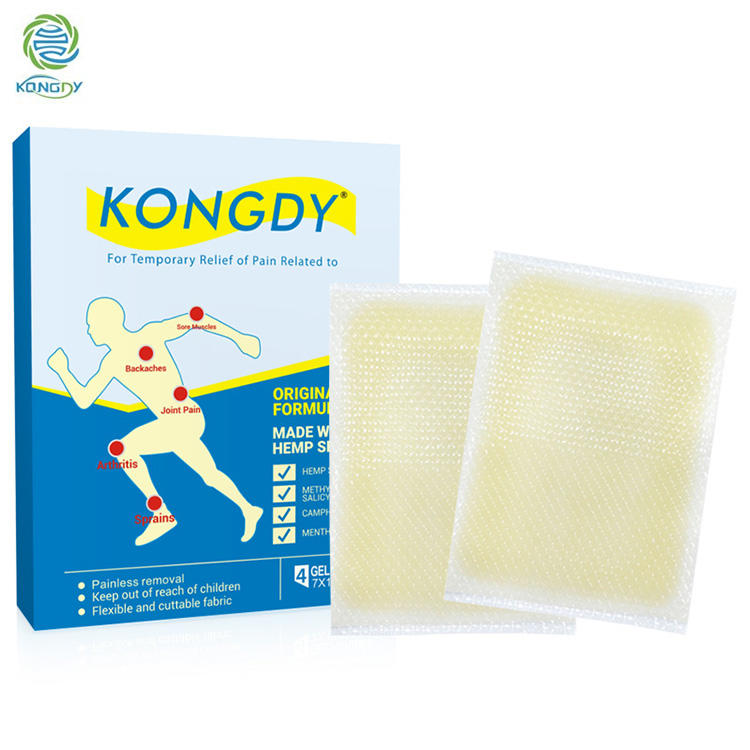The main ingredients of joint pain relief patch are capsicum extract, belladonna liquid extract, peppermint, methyl salicylate, camphor, diphenhydramine hydrochloride, and so on. The pain relief patch will effect that blood circulation, anti-inflammatory, analgesic, the local vascular dilatation. Use joint pain relief plaster for direct patching the affected area.
What is the most effective pain relief patch?
Herbal pain relief Plaster can moderate muscles and joints aches and pains associated with arthritis, sprains, strains, bruises, and simple backache.
Are our pain relief patches safe?
Note: Herbal pain relief Plaster, some containing efficacy, relatively strong skin irritant drugs, long-term, large-scale use will stimulate the skin, resulting in allergic patients, causing skin rashes and itching. Rash showed clear edge edema, erythema, the surface may appear papules, vesicles, and Itching obvious. Therefore, patients should be observed when dressing the skin, prevent allergic reactions. Once patient allergies and other adverse reactions, they should Discontinue immediately, avoid scratching and hot water to wash, and timely medical treatment.

In general, before you use the pain relief patch, patients should wash the affected area of skin; then stick with it, you can paste the direction of stretch fabric with a joint program of activities To remain consistent. In particular: This product is not long-term or large-scale use. General medicine plaster paste with every time should not more than 12 hours, there is the plaster has specific instructions that can be used up to 24 hours, the patient must read the instructions carefully before using the plaster according to the instructions and refer to a doctor or Guide to using. Do customize pain relief patches have the following three ways.
1. Customer provides the product composition ratio formula, we added ingredients in accordance with the requirements of customers, clients achieve the results you want.
2. We can print your logo and company brand name on the fabric or on the adhesive back paper.
3. We will print your brand name and logo on the bags, boxes. Printing the customize package for you.
Prescription pain-relief patches are available to manage both acute (short-term) and chronic (long-term) pain. A pain-relief patch is placed on the skin and a specific amount of medication is absorbed into the bloodstream.
Physicians may prescribe different types of pain-relief patches depending on the patient’s medical history and level of pain. Examples of prescription pain-relief patches include Flector (diclofenac epolamine), a nonsteroidal anti-inflammatory drug (NSAID); Lidoderm (lidocaine), a local anesthetic; and Duragesic (fentanyl), an opioid pain medication.
Uses
Pain-relief patches are prescribed by physicians for patients with various medical conditions.
For minor injuries, such as muscle sprains and strains, a physician may prescribe a patch with diclofenac epolamine, an NSAID in the same group of medicines as aspirin and ibuprofen. In 2010, a study found that the diclofenac pain patch was associated with significant pain relief for soft-tissue injuries like strains, sprains, and bruises with few adverse effects.
1. It’s often prescribed for patients suffering from the pain of shingles (postherpetic neuralgia), which can last for months or years after infection.
2. Lidocaine is a local anesthetic that works by stopping nerves from sending pain signals. The topical lidocaine 5% patch starts acting quickly, usually in less than four hours, and is generally well-tolerated, other than mild skin reactions at the application site.
3. For severe, chronic pain, physicians may prescribe fentanyl patches, Fentanyl patches should be used only by patients who are tolerant of opioids and those with long-term, severe pain who can’t be treated with other medications.
4.2018 study found that fentanyl patches were as effective as oral morphine in managing moderate to severe cancer pain with fewer side effects, such as nausea and vomiting.

